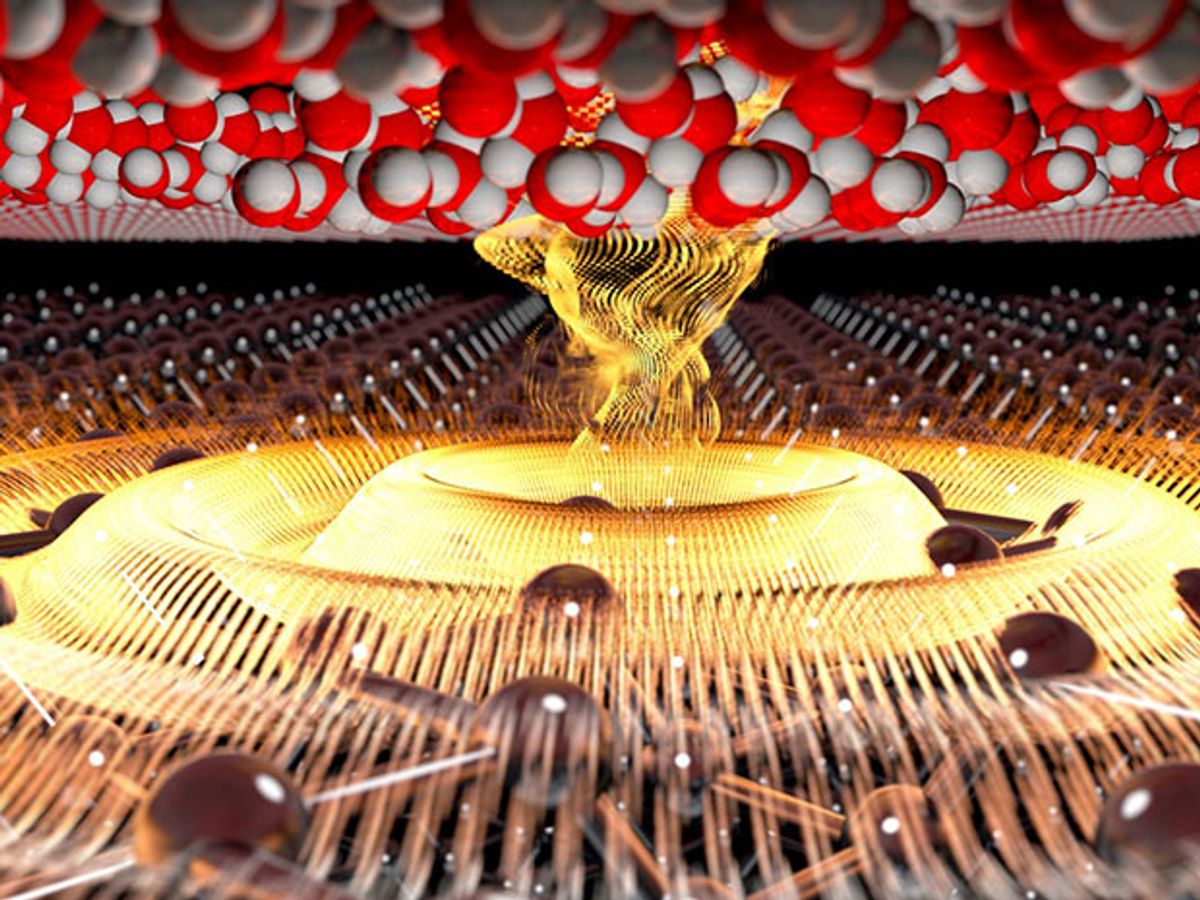Much research has been dedicated to exploiting the waves and oscillations of electrons that are produced on the surface of a metallic structure when photons of light strike it. These waves of electrons are called either surface plasmons when referring to the oscillations in charge alone, or surface plasmon polaritons when referring to both the charge oscillations and the electromagnetic wave. The field developed around exploiting this phenomenon has become known as plasmonics.
Plasmonics has made all sorts of interesting things possible, such as confining wavelengths of light to design smaller photonic devices. However, there has been no good way to turn the waves “on” and “off” rapidly.
Now researchers at the University of Regensburg in Germany, in collaboration with colleagues from Istituto Nanoscienze–CNR and Scuola Normale Superiore in Pisa, Italy, have demonstrated the ability to selectively choose between an “on” state, where surface polaritons can be excited and propagate across the sample, and an “off” state, where no polaritons are present.
So what is the trick to achieving these “on/off” states? Don’t use a metal at all. Instead, employ the two-dimensional material du jour: black phosphorus.
In research described in the journal Nature Nanotechnology, the international team of researchers found that by using black phosphorus the time window of the “on” state could be as short as 5 picoseconds. This ultrashort time window could eventually lead to switching speeds that are many orders of magnitude faster than today’s fastest transistors.
“Five picoseconds for the ‘on’ state is quite favorable for achieving high switching rates and therefore an important step towards logical building blocks based on surface polaritons, which have the potential to increase the operation clock rates by a factor of 1,000 from conventional electronics from the gigahertz to the terahertz regime,” said Markus Huber, a researcher at the University of Regensburg and lead author of the paper, in an email interview with IEEE Spectrum.
This is the latest research effort in a hot area of 2D materials: heterostructures, which are basically 2D crystals that have been stacked on top of each other and held together by van der Waals-like forces. So-called van der Waals (vdW) heterostructures result in materials with unique properties.
To date, these vdW heterostructures for optoelectronic uses have employed monolayer graphene in place of a metal because graphene lacks a bandgap. This latest work represents the first time that a semiconductor material like black phosphorus has been used, rather than a pure conductor like metal or graphene, to propagate surface polaritons.
“I am very certain that we are the first to use black phosphorus to establish the full control of the propagation of a surface polariton and also image it in real space,” said Huber.
Huber is quick to point out that their research has not been working with a pure surface plasmon. “We are actually working with a coupled mode [a standing wave state of excitation], which in part is based on a surface plasmon in black phosphorus and in part by a surface phonon polariton in silicon dioxide,” he explained.
This mix has enabled the researchers to not only control the state between “on” and “off” but has also allowed them to keep the wave vector (direction and the magnitude of a wave) of the mode nearly constant during the whole switching process.
“This is a very favorable condition to build future devices because one has to couple light to our structure for ultrafast control,” said Huber. “In the case of only one fixed wave vector, a single grating could be used for in and out coupling, which is very efficient and in general not possible for pure surface plasmons.”
The belief is that this research represents a first step toward a digital logic-based system. “Of course, we are currently in the regime of fundamental research and have to understand the underlying mechanisms even better, but in principle our results show that it is possible to selectively choose between an “on” state and an “off” state,” added Huber.
One of the fundamental questions that still needs to be addressed is how to control surface polaritons and couple them to other interesting materials like graphene. “This would allow [us] to use graphene as the ‘wires’ and black phosphorus as the ‘transistor’ parts of the logic,” he added.
As fundamental research, the engineering challenges remain fairly formidable.
Huber added: “Our work so far has been done in a lab environment on an optical table with a sophisticated laser setup, which was needed to switch the structure and excite the surface polariton mode. To shrink this to the size of computer chips we will need to downsize the lasers for switching and excitation. So there is still a lot of work to do before plasmonic logic can enter our cellphones and computers, but we think we are on the right track.”
Dexter Johnson is a contributing editor at IEEE Spectrum, with a focus on nanotechnology.



